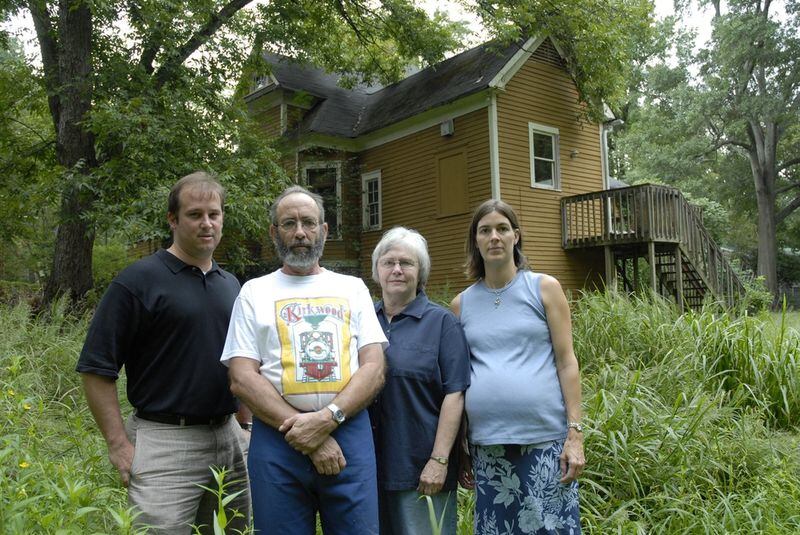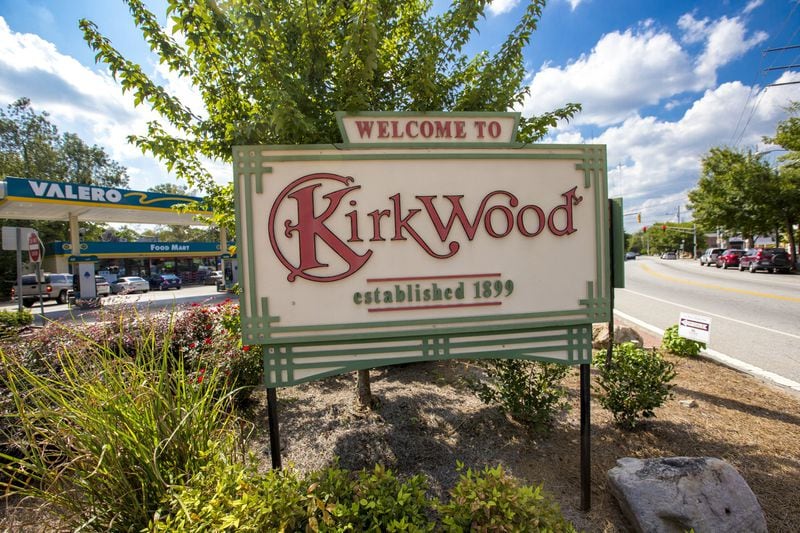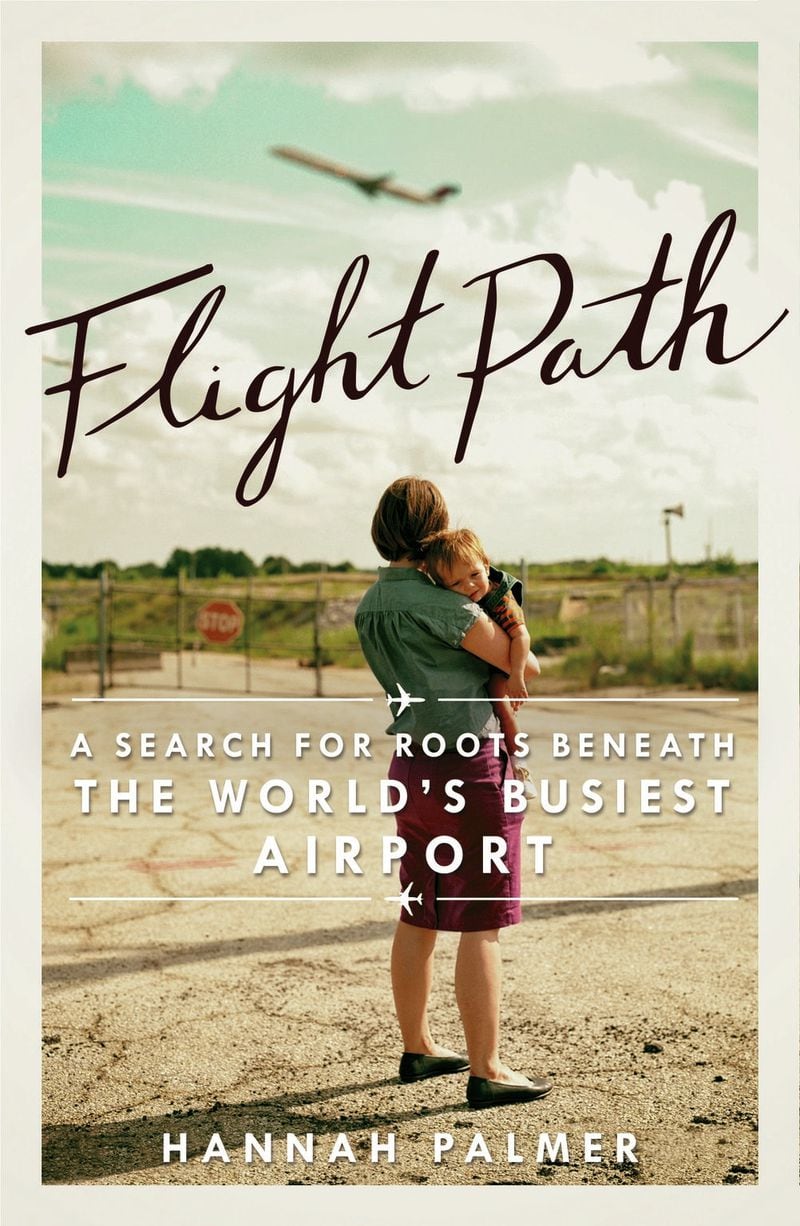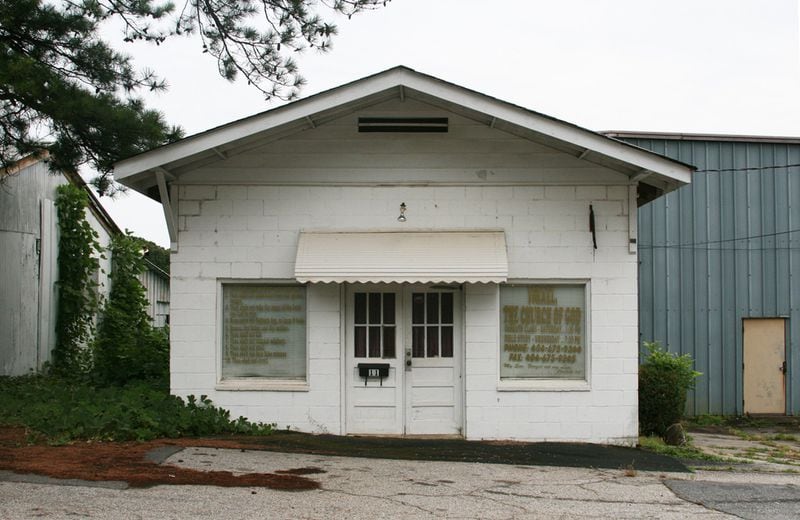Despite protests from the Kirkwood Neighbors' Organization and bad press in the local paper, they bulldozed the house where I lost my virginity.
It was a turn-of-the-century farmhouse about a mile from my college campus, with great blue-gray gables framed by two towering cedars at the street. In 1895, the house would have been a suburban retreat, six miles east of downtown Atlanta by streetcar. In 1997, the area had been swallowed by the city but, like most old intown neighborhoods, it retained the green isolation and slow pace of the country. In the back yard, a small bamboo stand hid the beginnings of a creek, while on all sides oaks rippled over sidewalks and asphalt. The summer I lived at 332 Murray Hill Ave., the nights were noisy with crickets and bullfrogs and the dreamy monotone of the MARTA train.
Technically, it was Mom’s house, one of a series of rentals. My mother, a high school-educated waitress, florist, potter and party girl, moved cheerfully every two or three years during my childhood. Never far, each time just a neighborhood over, to another rental house or crumbly duplex or roach-bombed apartment in a hacked-up Victorian. My mom left my dad, my sister and me when we girls were toddlers and she’d been moving ever since. She moved whenever the lease was up; she moved to break up with boyfriends. In fact, Mom was always moving, never still. Always loading and unloading pots from her kiln, flats of flowers from her truck, or scuba gear from the basement. Mom was forever damp with a fine glow of perspiration, with her rosy cheeks, fabulous cleavage, and moist wisps of hair curling around her face.
She filled each place she rented with stacks of magazines, bottles of perfume, and saucers of seashells and dried butterflies. Wherever she moved, she covered every wall and surface with artwork. My mother was part of Atlanta’s vibrant, artsy, gay, post-hippie crowd that created an intown scene in the eighties while white families evacuated to the suburbs. I think she paid only $700 per month for the house on Murray Hill Avenue because the neighborhood was so “transitional” — that’s code for transitioning from black to white residents, or the other way around. From Grant Park to Virginia-Highland, Inman Park to Kirkwood, Mom’s old stomping grounds have now gentrified into Atlanta’s most prized urban real estate.
It was by far the biggest, grandest place Mom had ever rented. The 14-foot ceilings predated air conditioning, so it was cooler to prop open the front and back doors with box fans, pulling the breeze down the wide central hallway, rather than taking chances with Georgia Power. The rooms were uneven hexagons joined by tiled fireplaces and heavy, double pocket doors. To guests, I pointed out the wealth of fireplaces, all six defunct. Everything about the house, from the stone porch columns and thick front door to the wood trim and oblong doorknobs, seemed broader than stability required. It was built to last another hundred years.
Mom arranged her pottery wheel on the side porch and sub-let the two enormous front bedrooms to friends and exes. I was attending college nearby, so I stopped by regularly to escape the dorms, wash laundry and hang out with Mom’s revolving crowd of guests. The large, secluded property was ideal for her extravagant parties.
At one fateful soiree, she seduced a chef, swiftly married him, and embarked on a three-month European honeymoon. Her suitors were shocked.
“She’s 42,” I said, shrugging. “Time to settle down.”
And so I came to live at 332 Murray Hill Ave. for the summer, basically house sitting and dog sitting rent-free while Mom was on her honeymoon. It was the first time I’d lived with my mother since my parents’ divorce, and she wasn’t actually there.
Mindy, my best friend from high school, moved in to keep me company and to avoid going home for the summer. We only lived there for a few months, but it seemed longer. It was the summer after our freshman year, and the days were long and eventful. We had no parents, dorm rules or classes. We had no greater ambition than to live as cheaply and work as many double shifts as possible. Mindy, perpetually tan, barefoot and grinning, added twinkly lights to the wrap-around porch. I pumped enough gasoline into my red Honda to report to my hostessing job at Mick’s: An American Grill. Afterwards, I rambled down the long gravel driveway of Murray Hill at midnight, my all-black uniform plastered with sweat and kitchen grease. I hoped to find Mindy’s blue hatchback already parked and cooling. Where were we going tonight? I wondered. Or who was coming over? A breeze seemed to follow me everywhere.
Our landlord, Carol, was the lone authority figure on the premises. Bone-thin and fair-skinned, with that long, stringy hair that doesn’t flatter women over 30, she showed up occasionally to plant pansies and make minor renovations. We received no phone call, no warning that she was coming over. We dashed out to the mailbox in our pajamas and there was Carol, elbow deep in a planter. We watched her through the window, murmuring, “What is she doing here?” We believed she was keeping an eye on us. Or worse — preparing to sell our house.
That summer, between spontaneous rounds of smoothie making, finger-painting and lying out on the back deck, Mindy and I continued the work of throwing house parties. Mom would have been proud. Boys spilled out into the backyard, random neighbors showed up and offered us “crack rock.” As the hostess, I fell in love with a number of guests, but it was only Jason, a lanky, foul-mouthed video artist I barely remembered from high school, who actually fell in love with me. In August he attended my 19th birthday party and celebrated by streaking the crowd and ceremoniously taking a bubble bath with a few friends in the middle of the party.
He cornered me by the refrigerator and invented the world’s greatest pickup line: “I miss you because I don’t know you yet.”
I was startled and amused; he soon had my undivided attention. Jason always called first. He always called back. He pursued me into September, October, November, even after he went back to school in Savannah.
As the year drew to a cold and soggy end, Mom and her new husband were busy scouting for a new home — to buy, not rent. In fact, they planned to leave Atlanta altogether and “start over” in a small, artsy village in the mountains. “Enough of this traffic,” she said. “I won’t miss the city at all.” The newlyweds were gone for weeks at a time while Mindy was spending more and more nights at her boyfriend’s place. So Jason stayed with me during Thanksgiving break.
Even though the actual virginity-losing was not the most romantic procedure, the spot where the historic deed took place deserves a memorial plaque. Fortunately, my future husband was already an expert at making me laugh. He had silently resolved to follow me, marry me, put his name on a mortgage next to mine, and he expected me to change my name, birth his babies and stay with him for life. Assuming all of this in advance, he took great care not to wreck the body squirming underneath him.
Suddenly it was Christmas, and we had to face our parents and sisters and brothers again. The lease was up. Mom and the chef were moving to Tennessee; Mindy and I had to vacate. There was a light, funereal winter rain as we moved out. I remember slipping on the front porch steps as I carried box loads of books to my car. Within a few months, Mindy was engaged to her boyfriend, a biblical studies major, which means I never saw her again. We were the last renters, the last residents of 332 Murray Hill Ave.
During my remaining time in college, I moved several more times from dorms to apartments to rooms in people’s houses where I always felt like a guest. Jason and I squeezed into twin-sized beds in other cities, states and countries. If I found myself riding MARTA eastbound, I studied the houses passing below the elevated tracks and tried to catch a glimpse of Murray Hill Avenue. Carol had the house painted mustard gold before she put it on the market. I learned to look for the tall back deck and the thicket of bamboo.
In 2001, a developer called The Enclave of Kirkwood, LLC, bought 332 Murray Hill Ave. along with seven other parcels on the street. They proposed to tear down the structures, clear-cut the property, and subdivide it into 10 residential lots with 10 new single-family homes. But the plans stalled for years for a number of reasons, including a legal issue over a road easement, concerns about the impact on the creek and a growing protest over plans to demolish the hundred-year-old “historic gem.”
I read about these protests while I was living in New York City and working as an entry-level assistant to a literary agent. I was surprised to learn that 332 Murray Hill Ave. was a “landmark structure,” a “rare example of Queen Anne-style architecture,” and the childhood home of an actress named Jane Withers, a child star contemporary of Shirley Temple who later starred with Elizabeth Taylor, Rock Hudson and James Dean in the movie “Giant.” I had never given a thought to the many lives that must have passed through the place since 1895. To me it was the house where I dyed my hair black in the bathtub and filled the fridge with Jello shooters. The house where Mom, Mindy and I all found the men we would marry.
The newspaper said that squatters had vandalized the interior of the house during the extended legal negotiations among the Kirkwood Neighbors’ Organization, City of Atlanta Department of Watershed Management and the developers. I wondered what vandalized meant. Broken windows and graffiti? Gutted for scrap metal? I imagined the worst. Not that it mattered to The Enclave of Kirkwood, LLC. The house was a teardown — the parcel’s location held the value.
My dread was short-lived. A week later, I sat at my desk on Fifth Avenue, 900 miles from Kirkwood, hunched behind a large computer display, pretending to work while reading online about this saga. The follow-up article announced, “Historic Home Toppled, Despite Neighbors’ Protests.”
I pitied the protesters. The photo accompanying the article made them look like a handful of NPR-loving birdwatchers who had bravely prevailed over the local crack trade only to be defeated by new-money developers who couldn’t tell a Queen Anne from a late Victorian. But I knew the real reason their campaign had failed. It was me. 332 Murray Hill Ave. was doomed because it had been my home. I had sealed its fate when I kissed my future husband on those front steps.
In my mind, the house's demise was part of a pattern. Every house I had ever lived in had been destroyed. The bungalow in Mountain View. The house my Dad moved us to on Barnett Road. The tract home in Forest Park. Sometimes it felt like a giant eraser followed me from place to place, wiping away my past. It rezones the landscape into warehouses, airport runways and in one case, a CVS Pharmacy. There's a spot in the cosmetics aisle where I estimate my childhood bedroom used to be. I slept there for 13 years, and now the view from my bedroom window features an array of lip color, thousands of small tubes suspended in midair. I sleepwalk to the parking lot. Whose idea was this? Whose dream have I wandered into?
* * *
I began thinking about the Murray Hill house when I was pregnant with our first son. Jason and I, now married and in our early 30s, were living in a 1940s bungalow on the south side of Atlanta, in a neighborhood not far from where we both grew up. Property values all over the city were in a state of collapse. The same houses on our block that had sold for $150,000 when we were buyers were now bank-owned foreclosures, listed at $20,000 and less. Yet we were resolutely pouring money into our tiny two bedroom/one bath house, renovating to make space for the baby.
By this time, the Murray Hill house had been gone for five years, its demolition coinciding with the peak of Atlanta’s real estate frenzy in 2006. Back then, I had digested the news with a shrug. The eraser strikes again. But now, with a child on the way, the nesting instinct presented itself as a panicked curiosity about my lost houses. They began haunting me.
I persuaded Jason to drive by The Enclave of Kirkwood, expecting the development to be a fully established cluster of luxury homes with at least two or three on the market. I planned to gather flyers from the More Information boxes out front and laugh at the asking prices.
But this is not what we found at all. As we drove down the familiar street, I was lost. The city was recovering from a week-long ice storm and crusty snow still clung to the shaded outlines of houses. This Murray Hill Avenue didn’t match the summery scenes of my memory.
“You’ve passed it,” I said. “Go back.”
Jason kept the truck rolling slowly down the block.
“No, it’s up here,” he said, gesturing to a large wooded lot. “There’s the driveway.”
Instead of hosting million dollar nouveau-Craftsmans, the huge lot was vacant. Only vacant isn’t the word — there was a jagged, leafy crater where the house had been, rimmed with overgrown debris, gray islands of snow and No Trespassing signs.
At first I didn’t recognize the place, almost refused to recognize it. There was no way they had torn down the house and failed to redevelop the land. That would be a waste too dumb for even the dumbest developer. But the bamboo grove was a dead giveaway. I had to get out of the truck and walk the entire length of the block.
It looked like a hasty demolition — they hadn’t even graded the land or marked out the new plots. Jason didn’t hesitate to hurdle the orange mesh construction barrier and tromp into the ruins of the foundation. I stopped myself from nagging him and just paced a dry patch of sidewalk, my hands jammed deep in the pockets of my overcoat. As I panned the block, the details of the place gradually came into focus. The long gravel driveway had been rutted by bulldozers. The two tall cedars that had flanked the entrance to the house were still in their places. Somehow, a thin ivy-covered trellis in the front yard had survived the demolition. And then I recognized the yucca plant by the stone steps where we had kissed for the first time. The spiky, tropical plant seemed weirdly out of place, which made the whole scene click in my mind.
Atlanta is full of these half-realized subdivisions, frozen in a state of anticipation, but never built because the financing fell through, the buyers vanished. But this gaping, leaf-strewn pit was a particular insult to me. A warning. They tore it down for no reason. If this could happen to a hundred-year old “gem,” it made everything seem disposable.
Why had we come back here? What kind of fools would move to Atlanta to create a home? We planned to grow old in our house, even as we paced the ruined site of our courtship. Maybe I am cursed. Or maybe this is an Atlanta phenomenon.
My city is a young city, recently named and renamed, burned and rebuilt. I should say that by “Atlanta,” I mean metro Atlanta, a sprawling confederation of 10 counties and 80 distinct cities, all welded together by interstate highways and populated by people who are not from Atlanta. In business meetings and social gatherings, small talk begins with one of two questions, the first concerning the traffic, and the second asking where you’re from. Every time, a Southern drawl slips into my answer: I’m from here. Still, I would be hard-pressed to point out exactly where here is.
© Hub City Press. Excerpt from “Flight Path: A Search for Roots Beneath the World’s Busiest Airport” by Hannah Palmer. Published with permission.
RELATED STORIES
AUTHOR EVENTS
'Flight Path' by Hannah Palmer. 7 p.m. April 13. Free. Highland Inn & Ballroom Lounge, 644 N. Highland Ave. NE, Atlanta. Presented by Acapella Books. www.acappellabooks.com.
Also 6 p.m. April 15. Free. Hills & Hamlets Bookshop, 10625 Serenbe Lane, Chattahoochee Hills. www.hillsandhamlets.com.
ABOUT THE STORY
Having grown up in a variety of budget-priced rental houses and apartments in Atlanta, particularly around the Hartsfield-Jackson International Airport, author Hannah Palmer came to the realization one day that nearly every abode from her youth had been demolished by developers. Her book about the fate of her past residences, “Flight Path,” is a humorous and bittersweet look at the vagaries of life in Atlanta where the old is constantly being replaced with the new in the city’s relentless and sometimes misguided quest for progress.
Suzanne Van Atten
Personal Journeys editor
personaljourneys@ajc.com
ABOUT THE WRITER
Hannah Palmer works as an urban designer in Atlanta. Her writing explores the intersection of Southern stories and urban landscapes, and has appeared on CNN.com, Art Papers, Creative Loafing and in masterplans for urban design projects around the world. She earned an MFA in creative writing from Sewanee: The University of the South and now lives near the Atlanta Airport with her husband and sons.
NEXT WEEK: The Passover Holocaust survivor Eva Friedlander will never forget.









